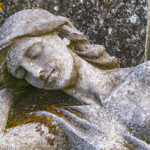Native American Memorials: Honoring a Rich and Complex History
Introduction:
Native American memorials are powerful symbols of remembrance and recognition, paying homage to the rich and complex history of the indigenous peoples of North America. These memorials serve as a reminder of the struggles and triumphs of Native American communities and provide an opportunity for education and reflection. In this article, we will explore the significance of native American memorials, delve into their historical context, and discuss the importance of preserving and respecting these sacred sites.
The Importance of Native American Memorials
Native American memorials hold immense importance for both indigenous communities and the broader society. These memorials play a crucial role in acknowledging the impact of colonization, forced assimilation, and the loss of land and culture endured by Native Americans throughout history. They serve as a platform for healing, reconciliation, and raising awareness about the ongoing struggles faced by indigenous communities.
Historical Context and Controversy
Many native American memorials are rooted in historical events and figures that shaped the destiny of Native American tribes. One such memorial is the Crazy Horse Memorial in the Black Hills of South Dakota. This colossal sculpture stands as a tribute to the Oglala Lakota war leader Crazy Horse, who fiercely resisted the encroachment of white settlers. However, some memorials have sparked controversy due to their connection to controversial figures, such as Christopher Columbus or Civil War generals.
Personal Experience:
During a visit to the Crazy Horse Memorial, I was struck by its scale and the determination it represented. It reminded me of the resilience and strength of Native American communities in the face of adversity. As I watched the ongoing carving of the monument, I couldn’t help but feel a sense of awe and respect for the indigenous peoples who have persevered despite the challenges they have faced.
Preserving Sacred Sites
Native American memorials are often located on or near sacred sites that have deep spiritual significance for indigenous communities. These sites are imbued with ancestral connections, cosmological beliefs, and cultural practices. It is crucial to preserve and protect these sacred places, ensuring that their integrity is maintained and that they are respected by visitors. This involves engaging in meaningful consultation with native communities, who should have a say in how these sites are managed and interpreted.
Educating the Public
Native American memorials have a vital role in educating the public about the true history and experiences of indigenous peoples. These memorials should not be mere symbols of the past but should also serve as tools for understanding the present and working towards a more inclusive future. By providing accurate and comprehensive information, these memorials can challenge stereotypes, dispel myths, and foster a greater appreciation for the diverse cultures and contributions of Native American communities.
Summary List:
1. Native American memorials serve as symbols of remembrance and recognition, honoring the history of indigenous peoples.
2. These memorials acknowledge the struggles and triumphs of Native American communities, promoting healing and reconciliation.
3. Preserving and respecting sacred sites is crucial, as they hold deep spiritual significance for indigenous communities.
4. Native American memorials play a vital role in educating the public and dispelling stereotypes about indigenous peoples.
5. Consultation with native communities is essential when managing and interpreting these memorials.
In conclusion, native American memorials stand as powerful symbols of remembrance, recognition, and education. By preserving and respecting these sacred sites, we can honor the rich and complex history of indigenous peoples and work towards a more inclusive future. As visitors, it is important for us to approach these memorials with humility, empathy, and a willingness to learn. Only then can we truly appreciate the cultural heritage and resilience of Native American communities.













